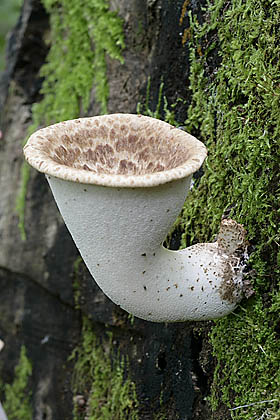Dryad's saddle
Text: Toivo Tuberik
Photo: Arne Ader
Translation: Liis
Dryad's saddle
| Dryad's saddle, Pheasant's back |
Soomustorik
|
Polyporus squamosus |
Mushrooms are generally an autumn theme, but nature has interesting treats for gourmands already from early spring. The time of the morels and false morels is past, and edible fungi aren’t easy to find on the ground, unless a very early chanterelle is there as a surprise.
But it pays off to look a little higher: there is something that we usually pass without any culinary thoughts.
The dryad’s saddle grows on decaying stumps of deciduous trees and on dying or dead trees, particularly on oaks. In the photo above is a nice young specimen, an old one can be more than half a metre wide.
Young fruiting bodies are suitable for cooking; the skin of the cap should be removed but not the stalk. Some mushroom books recommend parboiling but cooked directly they are much better. The main thing is that they are young with a delicate texture, the old ones are hopelessly leathery.
For one cooking idea read here: http://loodusgurmee.blogspot.com/ (in Estonian)
NB! Please don’t use mushrooms found in the city for eating.









